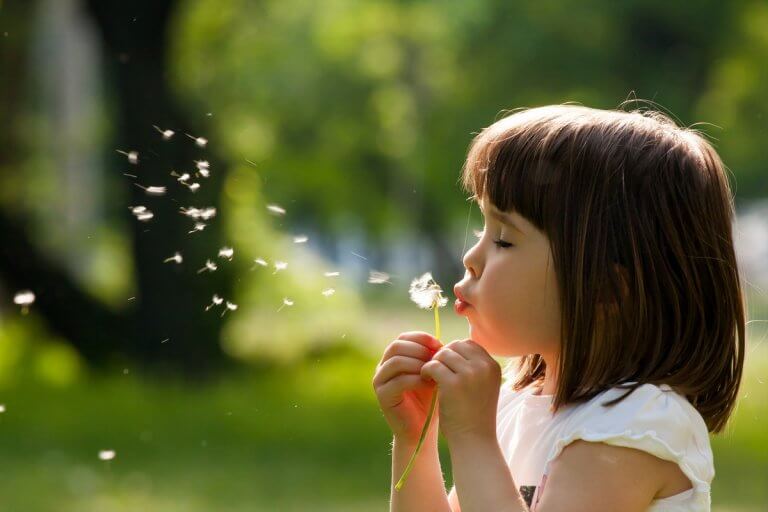
How do siblings from the same family, who grew up in the same environment, turn out so vastly different from each other? Or why do some people go on to lead successful lives despite coming from tough backgrounds while others struggle to climb out of the rabbit hole?
Is it merely to do with factors such as personality and luck, or is there more than first meets the eye?
Findings from The Orchid and the Dandelion by Dr W. Thomas Boyce, Professor of Paediatrics and Psychiatry at the University of California in San Francisco, noted that children have two different responses to their environments.
Most children are dandelions – hardy, resilient and are able to prosper and thrive in most environments.
Conversely, about 15 to 20 percent of children are orchids; they are highly sensitive and more reactive and susceptible to their surroundings. He notes that, apart from generally being more fearful, shy and hypersensitive, their response to stress tends to be pronounced.
Why some children struggle and all can thrive. Not plugging my book for once but Tom Boyce’s “The Orchid and The Dandelion”. What’s great about it is that his hypothesis is backed up by decades of repeatable scientific proof. pic.twitter.com/JdUOmdbdyc
— Philippa_Perry (@Philippa_Perry) January 12, 2019
They need empathetic parenting and teaching and can thrive in the right environment. When this is not met, they may be prone to becoming ill or addicted to drugs, and may even suffer from mental illness.
But does this suggest that dandelion children are primed for success, while orchids are doomed for failure? Thanks to Boyce’s findings, it doesn’t necessarily have to be that way. By understanding how different children react to their environment, parents and teachers can better accommodate their needs to help them excel.
Understanding an orchid child

According to research, about 15 to 20 percent of children are orchids – they are sensitive and more reactive to their surroundings. Source: Shutterstock
Boyce’s findings don’t just help us understand how children can thrive or wither depending on factors such as genetics and the environment, but also show us that different individuals need different frameworks to help them prosper in life.
At a conference in Vancouver, Canada, Boyce described himself as having had a relatively good life – he had a productive professional career, a stable marriage for over 40 years, and little to no disturbances to health.
In contrast, Boyce characterised his sister, Mary Elizabeth, as having a “life of disappointment and affliction”. She developed a disabling chronic disease at age 11, was diagnosed with schizophrenia at the age of 20, had a child out of wedlock, delivered a disabled child and committed suicide at the age of 53.
So how did two children of similar temperament and equivalent intelligence go on to have two vastly different lives?
“I think this has to do with my sister being a floridly orchid child,” he said, but does not discount the fact that other potential contributing factors are at play, such as having an unshared family environment (i.e. they were probably ‘raised in different families’ in certain ways), birth order and gender.
Raising a sensitive orchid

Parents and teachers should recognise an orchid child’s unique talents and nurture them. Source: Shutterstock
What can be done to successfully raise an orchid child? Boyce notes that orchid children can still thrive and flourish in supportive social conditions.
Parenting styles can play a crucial role in their emotional and physical ability to thrive; thus, parents will need to respond to their children accordingly by noticing these details.
Speaking to The Times, Boyce said that parents could “help orchids by encouraging them to recognise their individuality, give them routine and structure, be compassionate about pushing them forward to try new things, overwhelm them with tactile love and recognise they need to play more than dandelion children. Orchids have big imaginations you should engage with.”
He notes that parents and teachers should recognise an orchid child’s unique talents (they tend to be creative and imaginative) and nurture them, instead of having expectations at odds with their child’s gifts; provide them with chances to play creative and fantasy games in addition to giving steadfast unconditional parental love and attention; and develop warm and empathetic environments at home and at school.
Parents and teachers can also help orchid children thrive by providing a predictable routine while parents will also need to “honour their child’s fearfulness of new situations, but sometimes need to push the child into challenging situations so the child learns that they can cope with them”.
Boyce’s findings are impactful, helping parents and educators understand that some children tend to be more vulnerable and reactive to their surroundings than others. With this knowledge, they can tailor their parenting styles and, for teachers, their approach to classroom communication, thus creating the right environment to help children thrive.
He explains that: “…the world does indeed break everyone – even our children – and that one of our responsibilities as physicians, as teachers, as administrators, as social workers, is to help children become strong in broken places.”
And right he is.
Liked this? Then you’ll love…
Report card grades aren’t the best way to measure academic achievement, says study
Rule of three: Is creativity, collaboration and critical thinking essential for K12 learners?







